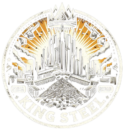CRC
Understanding Cold Rolled Coils (CRC): An Insight into Their Manufacturing and Applications
In the realm of steel production, Cold Rolled Coils (CRC) stand out as a crucial material used in various industries, from automotive to construction, due to their superior surface finish, tighter tolerance, and high strength. This 1000-word article delves into the intricacies of CRC, exploring its manufacturing process, benefits, applications, and the challenges it faces in today’s market.
The Manufacturing Process of Cold Rolled Coils
The journey of Cold Rolled Coils begins with hot rolled coils (HRC) as their primary input material. Hot rolled coils are initially produced by heating slabs in a continuous casting process to temperatures above 1,000°C, which are then passed through a series of rollers to achieve a specific thickness. However, the surface finish and dimensional precision of HRC are not suitable for applications where aesthetics and precise dimensions are crucial. This is where cold rolling comes into play.
Cold rolling is a metalworking process that occurs at room temperature, contrary to hot rolling. The hot rolled coils are first cleaned to remove any scale and then passed through a series of rollers at room temperature. The key aspect of cold rolling is the significant reduction in the thickness of the steel sheet, which is achieved through the high pressure exerted by the rollers. This process not only reduces the thickness but also enhances the strength of the steel through strain hardening by up to 20%.
The cold rolling process can be further divided into two categories: skin rolling and full hard rolling. Skin rolling, also known as a skin-pass, involves a minimal reduction in thickness (typically 0.5 to 1%) to improve the surface texture and flatness of the steel. Full hard rolling, on the other hand, involves a more significant reduction in thickness and results in a hard and brittle steel coil, which may require further processing to improve its ductility.
After the cold rolling process, the steel coils may undergo additional treatments such as annealing, which involves heating the material to a specific temperature and then cooling it down slowly. This process improves the steel’s ductility, making it more suitable for forming and deep drawing applications.
Benefits of Cold Rolled Coils
The primary advantage of CRC over HRC is the superior surface finish and tighter dimensional tolerances. The cold rolling process allows for a smoother and more reflective finish, which is highly desirable in consumer appliances and automotive body parts. Additionally, the enhanced strength and hardness imparted by the cold rolling process allow for the production of thinner and lighter components without compromising structural integrity.
Another benefit of CRC is the improved uniformity in thickness and flatness across the coil, which is crucial for industries where precision is paramount, such as in the manufacture of precision instruments and electrical appliances.
Applications of Cold Rolled Coils
Due to their enhanced properties, Cold Rolled Coils find applications across a broad spectrum of industries. In the automotive sector, CRC is used in the manufacture of body panels, fenders, and car frames, where high strength and a superior finish are required. The construction industry utilizes CRC in roofing, cladding, and framing components for its durability and resistance to corrosion.
Moreover, CRC is extensively used in the manufacturing of home appliances such as refrigerators, washing machines, and air conditioners, where aesthetic appeal and corrosion resistance are key considerations. The electrical industry also benefits from the non-magnetic properties of certain cold rolled steels, making them suitable for transformers and other sensitive applications.
Challenges and Future Perspectives
Despite their numerous advantages, Cold Rolled Coils face challenges, particularly in terms of cost and environmental impact. The additional processing steps in cold rolling, including cleaning, annealing, and surface finishing, make CRC more expensive than HRC. Furthermore, the steel industry is under increasing pressure to reduce its carbon footprint, and the energy-intensive nature of cold rolling processes presents a significant challenge.
Advancements in technology and ongoing research are aimed at making cold rolling processes more energy-efficient and environmentally friendly. Innovations in rolling mill designs, lubrication systems, and control technologies are helping reduce energy consumption and improve the efficiency of cold rolling mills.
Additionally, the development of new steel grades with enhanced properties and reduced environmental impact is a key area of focus. High-strength low-alloy (HSLA) steels, for example, offer superior strength and corrosion resistance without the need for extensive alloying elements, making them more sustainable.
Conclusion
Cold Rolled Coils play a pivotal role in modern manufacturing, offering a combination of strength, precision, and aesthetic appeal that is unmatched by other materials. While challenges exist in terms of cost and environmental sustainability, ongoing advancements in technology and materials science promise to enhance the efficiency and reduce the environmental impact of CRC production. As industries continue to demand higher quality and more sustainable materials, Cold Rolled Coils will undoubtedly remain at the forefront of manufacturing innovation.
